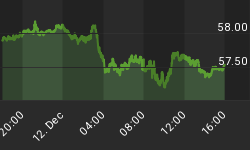Business expectations are high and rising as measured by a new high in the inventory-to-sales ratio.
The Econoday Consensus Expectation was for no growth in inventories, but the actual result was +0.3 percent.
That rise sent the inventory-to-sales ratio to the highest point in the recovery.
Business inventories rose a higher-than-expected 0.3 percent in September on a back-up of inventories in the retail sector. The build is a plus for third-quarter GDP revisions but may not be a plus for future production and employment.
Retail inventories surged 0.8 percent in September while sales came in flat, in turn raising the inventory-to-sales ratio to 1.48 from 1.47 for the highest of the recovery. Ratios across most retail subcomponents moved incrementally higher.
This report's other two components, which were previously released, include a 0.4 percent decline for factory inventories and a 0.5 percent rise for wholesales inventories.
Had this morning's retail sales report for October proved stronger, the September build for retail inventories would be no concern. But the October sales report proved soft, raising the risk that retailers may be over-estimating holiday demand.
Inventory to Sales Ratio

Retailers Overestimating Demand?
I certainly concur with the idea there is a huge risk retailers are overestimating demand. And I also concur with Bloomberg that October retail sales are "soft". In fact, retail sales have been soft for three months.
Curiously, this is what Bloomberg had to say in its Econoday Report just this morning regarding retail sales: "This report is better than it looks, showing underlying strength that shouldn't scale down expectations for a December FOMC rate hike."
I contend the retail sales report is worse than it looks, perhaps far worse than it looks. For my take, please see Retail Sales Weaker Than Expected, Led by Autos; Car Boom Ending?
















